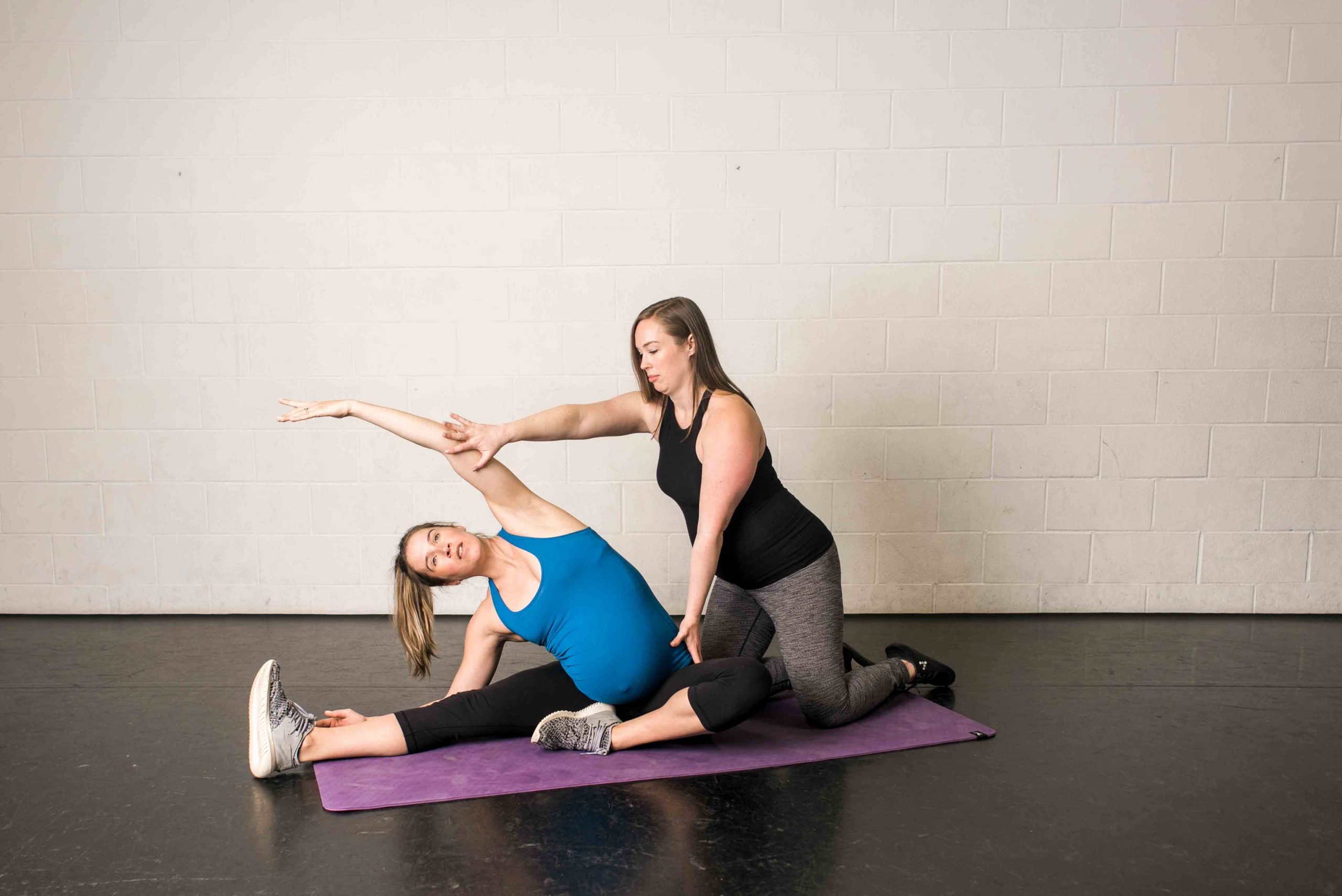“Engage the pelvic floor!” Ok…but how?!
We’re starting to hear more about the pelvic floor in the fitness industry, which is fantastic. You might even be hearing your trainer or fitness instructor cuing you to “engage your pelvic floor”, during some exercises. Great!
Buuuut…how do you even do that? How do you actually engage your pelvic floor muscles? Should we just know how to do this naturally? What if you can’t feel anything going on ‘down there’? How do you know if you’re getting the right stuff to engage? How hard are you supposed to squeeze?
If you have thought these things to yourself, you’re definitely not alone, in fact, I’d say you’re in the majority. These are exactly the things women tell me everyday.
Alright, first of all. What IS the pelvic floor?
Does it sometimes seem like the pelvic floor is this mythical body part that only women have, and that every woman who’s ever had a pregnancy loses function of once said child is born?
Well, both women and men have pelvic floors and no, you don’t have to be a statistic.
The pelvic floor is the stuff that holds your pelvic organs in the right spot. It’s the last place in your trunk that holds things in. There’s no more bones or fleshy bits after your floor…just literally, the floor. Seems pretty important, doesn’t it? Indeed, it is!
The pelvic floor is a group of muscles, nerves, tendons, blood vessels, ligaments, and connective tissue in your pelvis. They connect your “sitz” bones, tailbone, and pubic bone. These muscles create dome-like supports for your pelvic organs and to help stabilize your pelvis (amongst other things!).
For the ladies, these muscles surround three holes: the urethra, the vagina, and the anus. Think of a snowman type shape as the muscles surrounding the holes.
For the men, these muscles surround only two holes: the urethra and the anus. This also lends itself to why men typically have fewer cases of pelvic floor dysfunction than women, as we have more areas where things can break down, so to speak.
Ok. Got it. But, why do we even want to “engage” the pelvic floor?
The muscles of the pelvic floor act like any other skeletal muscle in your body, as in they contract, relax (more on this to come), can get too tight, too lax, lay down trigger points and scar tissue.
For the floor to function on point we need four things:
• Strength: to close the sphincters of your organs to prevent incontinence (urinary and fecal), to support the organs, to stabilize the pelvis, to help the abs create stability in our core.
• Endurance: to contract over, and over, and over again.
• Timing: to contract in anticipatory fashion, before we deadlift, pick up baby, sneeze.
• Control: not only contract, but to relaaaaaax the muscles, which is a major piece of the puzzle and often very tricky for women.
(Great info on the pelvic floor from the Bellies Inc. course, 2014)
“I feel like something’s going to fall out of my body”
Yep. I hear this from my female postpartum clients all. the. time. It’s not uncommon. They feel heaviness or pressure in the pelvis, downward pressure. This is typically a sign of pelvic organ prolapse (POP).
Let’s start with the bladder. This is called cystocele. Cystocele is when the bladder begins to fall back towards the vagina. There’s different grades of severity.
Next, the uterus. This is called uterine prolapse. Uterine prolapse is when the uterus begins to fall down and out through the vagina.
The last one we’ll talk about today, is rectocele. This is when the rectum begins to fall into the vagina.
Pelvic floor dysfunction isn’t just organs falling down, though.
Pelvic floor dysfunction can look like a lot of different things, not only prolapse. It could also be:
• Urinary or fecal incontinence: Any amount or leaking, ever, at all. Remember, this is extremely common (especially urine leaking), but not normal.
• Pain during sex. Any pain, discomfort, or something that feels not quite right.
• Hip pain, back pain, knee (or any other) pain.
• Diastasis Recti.
What happens when you shake a heavy, wet, paper grocery bag?
I was telling one of my girlfriends this analogy the other day and unfortunately I can’t remember where I first heard it, but it works brilliantly.
What happens when you repeatedly shake a heavy, wet, paper grocery bag? Eventually, the bottom is going to fall out and all the contents of the bag are going to spill all over, right?
Well, this is pretty much what will happen to your postpartum or untrained pelvic floor if you jump right back into your cross fitting, marathon training plan, or stair running and burpees at the local strollercise. Those pelvic organs are going to start to fall down, down, down.
It’s SO, SO important to retrain the core + floor so that you can safely get back to the activities you love, injury free. This is EXACTLY what will be happening in my new coaching group with Fitocracy beginning this Monday, June 2nd. It’s all remote coaching, so can be done anytime, anywhere.
Safe, effective strength training workouts for 2 months, designed not only to improve your fitness level and body composition, but also your pelvic floor health for now and in the future. Head here for all the details and to register for Monday! It’s gonna be a fun couple of months and likely, extremely different than the baby bootcamp you’re used to 😉
In Part 2, I’m going to discuss exactly how to properly start engaging your pelvic floor…with real cues and stuff.
JMG



